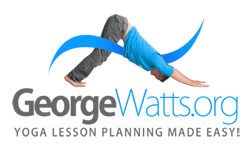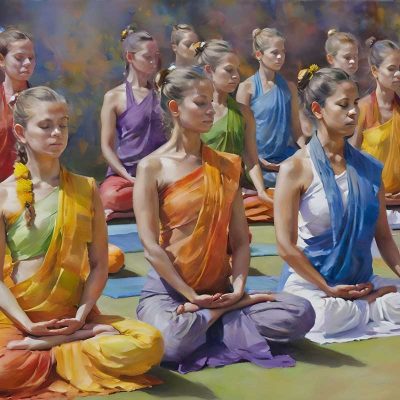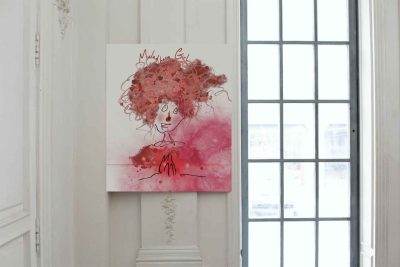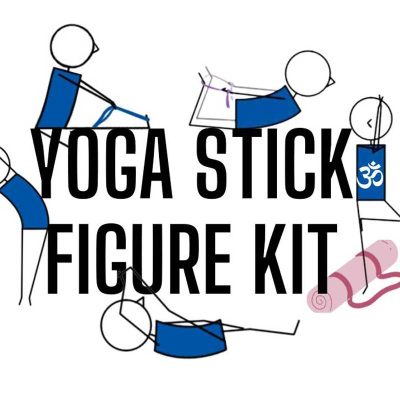My 10-Step Yoga Sequencing Formula
In this post, you’ll discover my 10-step yoga sequencing formula.
This is such an important subject, that I created 10 infographics to provide a visual feast for your eyes, heart, and mind. For a lot of yoga teachers, yoga sequencing is a dark, mysterious art.
When creating yoga lesson plans, even experienced yoga teachers struggle with the question..
“What comes next in the sequence?”
So, let’s start with step one of my yoga sequencing formula…
Step 1: Inner Voice Recorder
Don’t get distracted by your inner voice, and have faith in your yoga sequencing skills.
That’s not easy!
If someone invented an “inner voice recorder” and placed it inside the brain of a yoga teacher while they in the midst of yoga sequencing, you’d probably hear a chaotic conversation like this going on…
“Should I change the yoga sequence from last week in case my students get bored?”
“Is it best to keep the same sequence every week like in a Bikram or Baptiste yoga class?”
“Would I scare some students away if I added mantra or mudra to my class?”
“Would I scare some students away if I added some Partner Yoga to my class?”
“Would I scare some students away if I added pranayama to my class?”
“Should I add pranayama at the beginning, middle or end of a class?”
“What modifications can I give my advanced students to do during this pose?”
“What modifications can I give beginners (or students with injuries) in this pose?”
“How long should I let the students spend in each pose?”
When you hear any of these chaotic conversations going on in your head, be aware that there is no perfect yoga sequencing formula. Each time you teach a class, you’ll gain experience, and become more comfortable with “your sequencing formula”.
With experience, you’ll become comfortable with the fact that there is no perfect way when it comes to sequencing and crafting a yoga lesson pan.
Step 2: No Perfect Way
The only way to stop the dreaded inner voice recorder from replaying the same old questions is to understand in your bones that there is no perfect yoga sequencing system.
There are over 100,000+ of us (yoga teachers) worldwide and each one of us has our own unique way of a creating sequences and teaching a yoga class.
The only right way to teach is “your way”.
Hmmm, that’s not entirely true, because “your way” will be heavily influenced by your yoga teacher training, which leads us into step three.
Step 3: Yoga Teacher Training
How often you change up the sequencing for your students will very much depend on which yoga Teacher Training organisation you went through.
You might like this post I wrote called: 17 Types Of Yoga: Which Yoga Teacher Training Is Best For You? Even if you’ve already completed one teacher training, you might get some ideas from the seventeen types of yoga on what other types of yoga to sneak into your classes (e.g. I sometimes sneak chair yoga and partner yoga into my classes).
Most teacher training organisations recommend creating only one yoga lesson plan every 6 weeks, with Baptiste and Bikram yoga being the exception (see below).
Baptiste Yoga: Same sequence every week
Bikram Yoga: Same sequence every week
BWY: Change up sequencing each week (or every 6 weeks)
Yoga Alliance: Change up sequencing each week (or every 6 weeks).
So, why is using the same sequencing every six weeks, the norm?
Good question!
You’ll find out in step four…
Step 4: Use Same Sequences For 6 Weeks
I trained with the BWY, the governing body of yoga in the UK. It was a tough 200 hour, two-year yoga teacher training course that tested and pushed every trainee teacher.
I’ve spoken to many yoga teachers over the years and I’ve yet to come across one yoga teacher who took the course who wasn’t surprised by how hard the training was.
The good news is that we spent a lot of time on yoga sequencing.
The BWY sequencing formula was to create one yoga lesson plan and use it for 6 weeks, and repeat that process. Some students would change up the lesson plan on a weekly basis, but they were generally either full time teachers or retired (and had lots of extra time). When I first started out teaching, I used to burn the midnight oil to write a brand new lesson plan each week. Within a year of teaching, I discovered my students preferred sticking with one lesson plan over 6 weeks.
My yoga sequencing formula is: Create one lesson plan every 6 weeks.
But, you may opt for a different formula due to your personality and training.
Step 5: A-Type Personality
How often you change your lesson plan will depend on your yoga teacher training and your personality type.
Most yoga teachers are motivated, high achievers. Really, they are. Think about it. You probably did a 200-hour yoga teacher training course while juggling a job and raising a couple of kids. That’s pretty impressive!
If you’re an over achieving A-type personality, you won’t be able to resist spending lots of time creating a brand new lesson plan each week. And the lesson plan from week to week will often be dramatically different.
You will think this extra work makes you a better teacher.
But unfortunately that’s not how the Universe always operates.
Sometimes less is more.
That’s a hard pill for an “A-Type Personality” to swallow because they derive their sense of worth from busyness.
If you simply can’t resist changing the lesson plan, I recommend the “one change per week” tactic (see step six).
Step 6: One Weekly Change
If you think you’re an “A Type Personality”, and like creating a different lesson plan each week, my advice is to only change one thing each week (e.g. a different end-of-class relaxation). This will not only take the pressure off you, but it will make the classes far more enjoyable for your students.
Why will it make your classes more enjoyable to your students?
Your students want to learn.
And how do you get a “student”, whether it’s a yoga student or math student, to learn?
Repetition.
Repetition.
Repetition.
And that leads us seamlessly onto step seven.
Step 7: Repetition…Repetition…Repetition
Repetition is the mother of all skill.
If you don’t give your yoga students enough “repetition” each week, it’s impossible for them to learn the sequence. Consider reigning in your compelling need to change, change, change and remember that less change = more learning.
Repetition is the mother of all ability.
But…
Constant change is the mother of all inability.
You’ve heard “muscle memory”.
I used to be a professional golfer. As a pro golfer, I had to repeat a swing change thousands of times before it set into my memory. My coach would give me one simple golf drill to work on and that was the only thing I was allowed to focus on for weeks. We didn’t progress to anything else until that “golf drill” had literally been drilled into me.
Side note: I created this for my fellow golfers: Golf Zen Chair Yoga Card Deck.
Repetition is the secret of success in all walks of life.
Whatever you want to get good at needs repetition, and that’s the same for your yoga students’ progress on their sticky, colourful mats.
Once your students have the muscle memory of the sequence, they are able to take their practice to a deeper level. When they stop their “thinking brain” and use their muscle memory, they have a chance to explore each pose on a deeper level, like a well rehearsed actor knowing all their cues and lines back to front.
If an actor has to think about their lines, their performance would be wooden and not very enjoyable for the audience (or the actor). If the pro golfer has to think about their swing, their performance would be wooden and not very enjoyable for the golfer.
It’s the same with a “yoga sequence” that hasn’t been well rehearsed – the sequence will be wooden.
There will be no flow.
With a well rehearsed sequence, the student will be able to feel and connect from their hearts. And their over-active puppy brain will not get a chance to fill them with doubt or distraction. A well rehearsed sequence lets the student go from doing to being. Your students will be set free to be fully in the moment, allowing you the privileged gift of connecting with your students (see step eight).
Step 8: Connect With Students
When you teach the same yoga sequences over several weeks it allows you to be more in tune and connect with each student in your class.
As the weeks go by you’ll be able to:
- Track individual student progress
- Observe individual students more closely
- Make adjustments to those who need it
- Give modifications for students with injuries
- Offer tougher alternatives for advanced students
- Offer easier alternatives for beginners
- Teach more from the heart using yoga imagery
- Give students a yoga class handout of the sequence
Wow. It’s time for step nine, where you’ll discover how to create your class structure.
Step 9: Create Your Class Structure
Hope you like my infographic which visually represents my yoga class structure.
You can use the infographic as a guide to create your own yoga class structure by either bookmarking this post, or downloading the right-clicking on the infographic and downloading it.
Spend a few minutes right now editing my 12-part yoga class structure to create one that suits your personality. Having your own structure will save you countless hours, unleash your creativity and make teaching more enjoyable.
Below is a traditional yoga class structure…
My 12-part Yoga Class Structure
- Registration
- Notices (upcoming classes, retreats, etc)
- Handouts (give a handout based on what they are learning – e.g. Sun Salutations)
- Centring (awareness of breath)
- Warm up
- Static Postures & Rests (yin)
- Sequences (yang)
- Pranayama
- Meditation
- Discussion
- Relaxation
- Namaste
Okay. I’ve saved the best for last. You’re ready to morph into reality your yoga sequencing formula.
Step 10: Create Your Yoga Sequencing Formula
Now that you have edited the 12-part class structure (step 9) to suit your personality, let’s take a closer look at the yoga sequencing formula.
The sequencing is where a lot of yoga teachers get confused, stressed, and desperate.
Well, that’s the old you without a sequencing formula.
Here is a traditional 8-part sequencing formula:
- Warm ups
- Side Bends
- Twists
- Back Bends
- Forward Bends
- Balances
- Inversions
- Sitting
This formula isn’t set in stone.
You may come up with a different formula.
My sequencing formula changes approximately once a year. As I evolve as a teacher, my sequencing evolves with me.
Below is the one I currently use…
Here’s my 10-part yoga sequencing formula:
- Warm ups
- Side Bends
- Twists
- Back Bends
- Forward Bends
- Balances
- Inversions
- Play With Yoga Cards (students pick a card from the Mini Yoga Cards, Chair Yoga Cards, & Pranayama Cards)
- Sitting
- Mudra or Mantra
Side Note: I created the Mini Yoga Cards, Chair Yoga Cards, and Pranayama Cards as yoga teacher training aids. The 8th part of my yoga sequencing formula involves me asking students to pick a card from one of the decks. If you want to do the same, get my yoga card decks here.
The last section (part 10) is where I add nontraditional elements into my classes (e.g. mudras and mantras). When my students are sitting down, it’s the perfect opportunity to sneak in a mudra or mantra.
Within the Online Yoga Lesson Planner are the following twelve categories to make sequencing quick and easy:
- Bandhas
- Bolster Yoga
- Chair Yoga
- Laugher Yoga
- Mantra
- Meditation
- Mudra
- Partner Yoga
- Pranayama
- Relaxation
- Seated & Floor Poses
- Standing Poses
The twelve categories within the Online Yoga Lesson Planner will help you to quickly and easily create professional yoga sequences.
Get a cup of tea, a pen, and a pad, then spend a few minutes writing down your own sequencing formula.
Go on…
You’ve got time.
I’m serious.
Boil the kettle…then come back with your tea, a pen, and a pad.
When writing your sequencing formula in the notepad, use the formula above as a framework for your own. Once you’ve written down your formula, the important part is to be aware of it when planning your sequences.
Phew! It’s time for my conclusion.
George’s Conclusion: Save Time Using An Online Yoga Lesson Planner, And Use Yoga Card Decks As Fun, Easy-to-Use Teaching Aids
I hope you’ve been inspired to create your own yoga sequencing formula.
If you’re a fellow yoga teacher, I’ve got a hunch you’re gonna love my Online Yoga Lesson Planner.
As a Yoga teacher, I’m always looking for fun, easy-to-use teaching aids to make your classes engaging, informative, and effective. That’s why I create yoga card decks. Each deck has been painstakingly crafted to serve as a quick-reference guide, teaching aid, or lesson-planning tool, designed with Yoga teachers, and serious students, in mind.
Chakra Chair Yoga Card Deck: 52 Cards For Mind-Body Unity
The Chakra Chair Yoga Card Deck is a transformative tool designed for yogis of all levels, especially those seeking a gentle, accessible practice. This beautifully illustrated 52-card deck combines the wisdom of the chakra system with the ease of chair yoga, offering a unique way to balance your energy centres while staying grounded and supported.
Chakra Chair Yoga Expansion Card Deck: 52 More Cards For Mind-Body Unity
The Chakra Chair Yoga Card Deck was so popular that I created the Chakra Chair Yoga Expansion Deck with another 52 chair yoga exercises.
Blissful Breathing Card Deck: Your Guide To Mastering Pranayama
The Blissful Breathing Card Deck is your go-to resource for mastering the art of pranayama (yogic breathing). With 41 beautifully designed cards, this Blissful Breathing Card Deck guides you through a wide variety of breathing techniques to enhance relaxation, focus, and vitality.
Face Yoga Card Deck: 50 Cards For Youthful Radiance
The Face Yoga Card Deck is a fun and effective way to tone, relax, and rejuvenate your facial muscles. This 50-card deck features simple, step-by-step exercises designed to improve circulation, boost skin elasticity, and promote a radiant, youthful glow.
101 Mini Yoga Cards: With 101 Asana Sanskrit Pronunciations
The 101 Mini Yoga Cards are a compact and versatile resource for yoga teachers and practitioners alike. Each card features an illustrated yoga pose, its English and Sanskrit names, and how to pronounce the Sanskrit name. This makes it easy to plan classes, create sequences, or inspire personal practice while deepening your connection to yoga’s roots.
Zen Of Blissful Boredom Card Deck: 52 Ways To Cultivate Calm
The Zen Of Blissful Boredom Card Deck offers a lighthearted yet profound approach to finding peace in the mundane. Featuring 52 cards filled with simple, humorous, and mindful activities, this deck encourages you to embrace boredom as a gateway to inner calm and creativity.




















